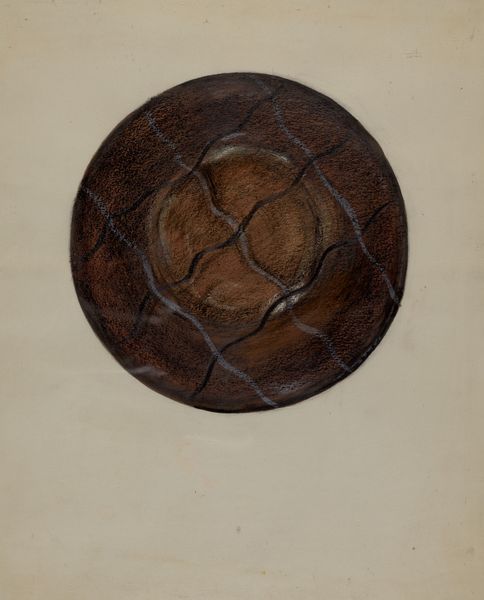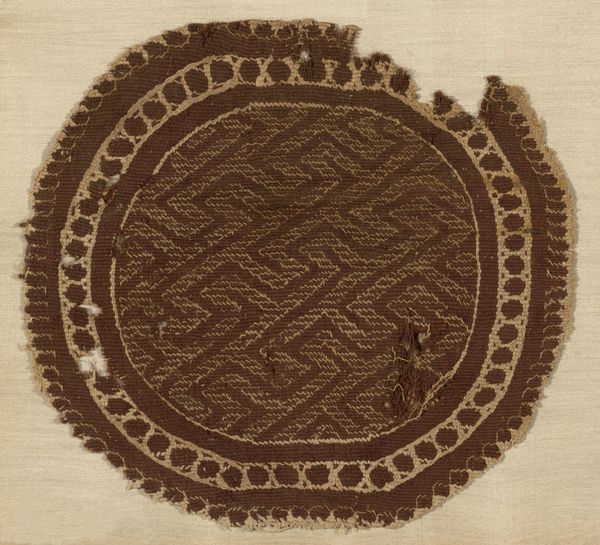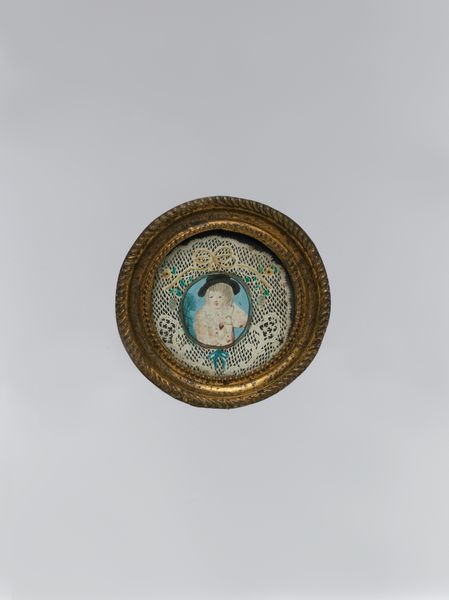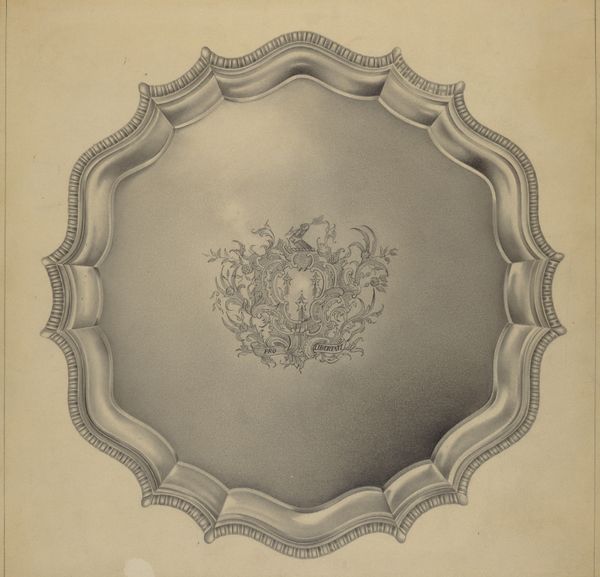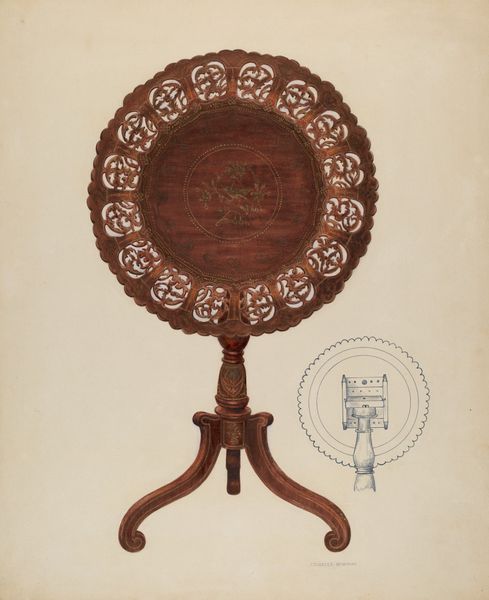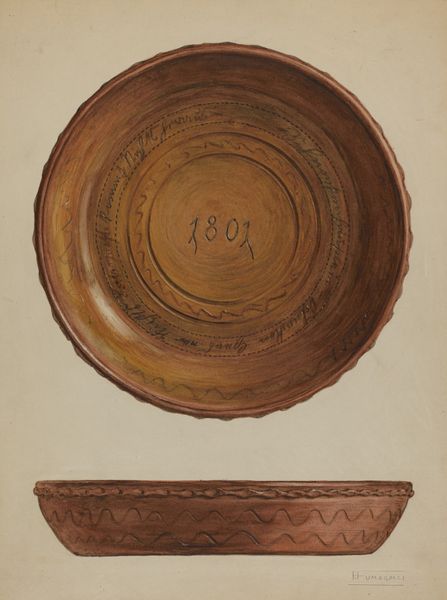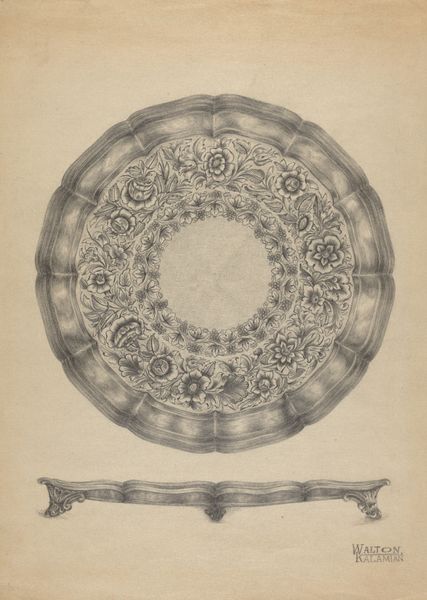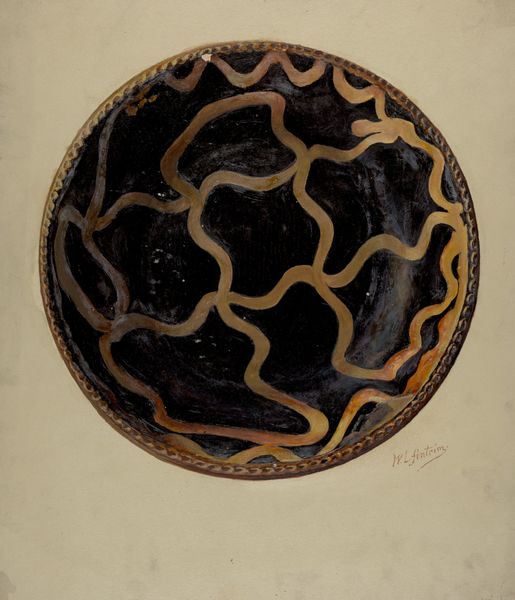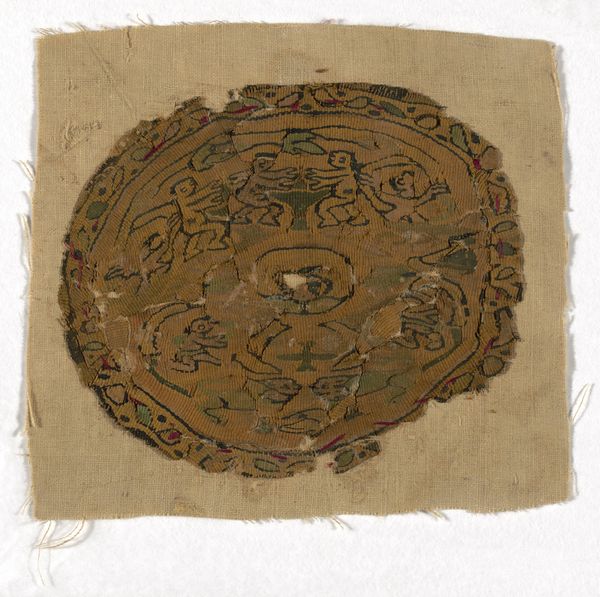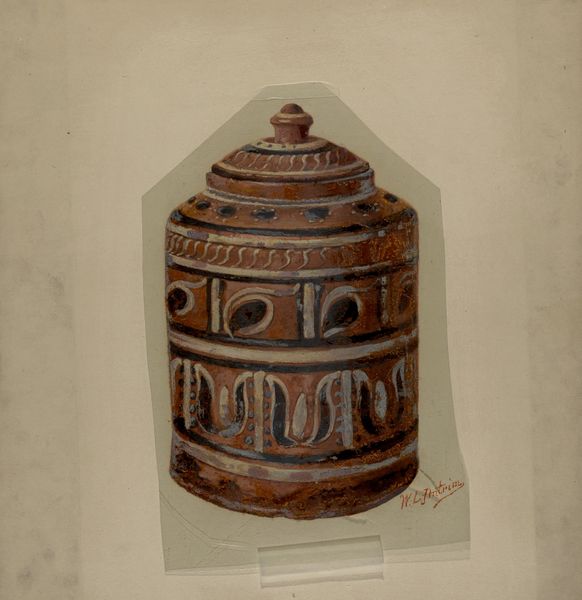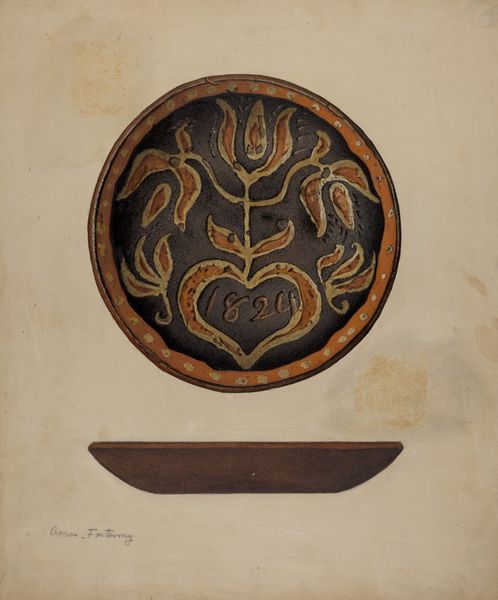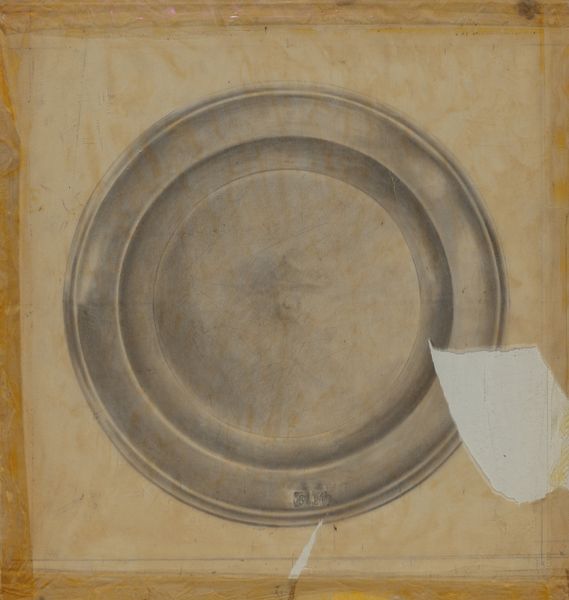
sculpture, wood
#
sculpture
#
folk-art
#
sculpture
#
wood
#
decorative-art
Dimensions: overall: 47 x 38.5 cm (18 1/2 x 15 3/16 in.) Original IAD Object: Drawing 7/8 actual size.
Copyright: National Gallery of Art: CC0 1.0
Curator: This is a tooled leather cover for a baptismal font, crafted in 1936 by Gerald Transpota. It's a fascinating piece of decorative art. Editor: Oh, wow! The first thing that strikes me is the intricate detail—like some kind of mystical mandala baked in leather. It’s got this rustic, earthy vibe, but also feels somehow elevated. Curator: Indeed, the geometric patterns, combined with what appear to be stylized floral motifs, create an interesting tension. It is drawing from traditions around folk-art while placed within the religious setting of baptism, symbolizing cleansing and spiritual rebirth. One cannot overlook how these traditional elements reinforce hegemonic, Euro-centric ideals of purity. Editor: Absolutely, you know, it’s almost like the leather itself is telling a story. I imagine the process, the hands that tooled this thing... must've been quite a labor of love—or devotion. I'm feeling like I want to be at the christening or a harvest festival right now. Curator: The act of tooling leather—carefully shaping it with specialized tools—speaks to the craftsmanship valued within the Arts and Crafts movement, which saw a resurgence of interest in handmade objects. It could be interpreted as resistance to industrial production that sought to reinforce gender and class boundaries through skill. Editor: I totally see that! It feels anti-machine-made in every possible way. Thinking about the material again, the leather is like our own skin that ages, marked by life—which ties so beautifully with baptism and new beginnings. It is a very tangible symbol of history and belief all in one. Curator: Its circular form further reinforces this symbolism, alluding to wholeness, the infinite, the eternal nature of the divine, though as a closed circle, it does provoke the question of who this symbolism of eternity is exclusionary towards. Editor: Mmh, always making me think of things in new ways. So even just as an art piece outside its original, devotional function, it really is powerful, speaking volumes of ritual, time, skill. It just gives so much back. Curator: I find myself wondering how the piece intersects with contemporary debates surrounding authenticity, cultural heritage, and the preservation of craft traditions in the face of globalization. A powerful meditation, no doubt.
Comments
No comments
Be the first to comment and join the conversation on the ultimate creative platform.
